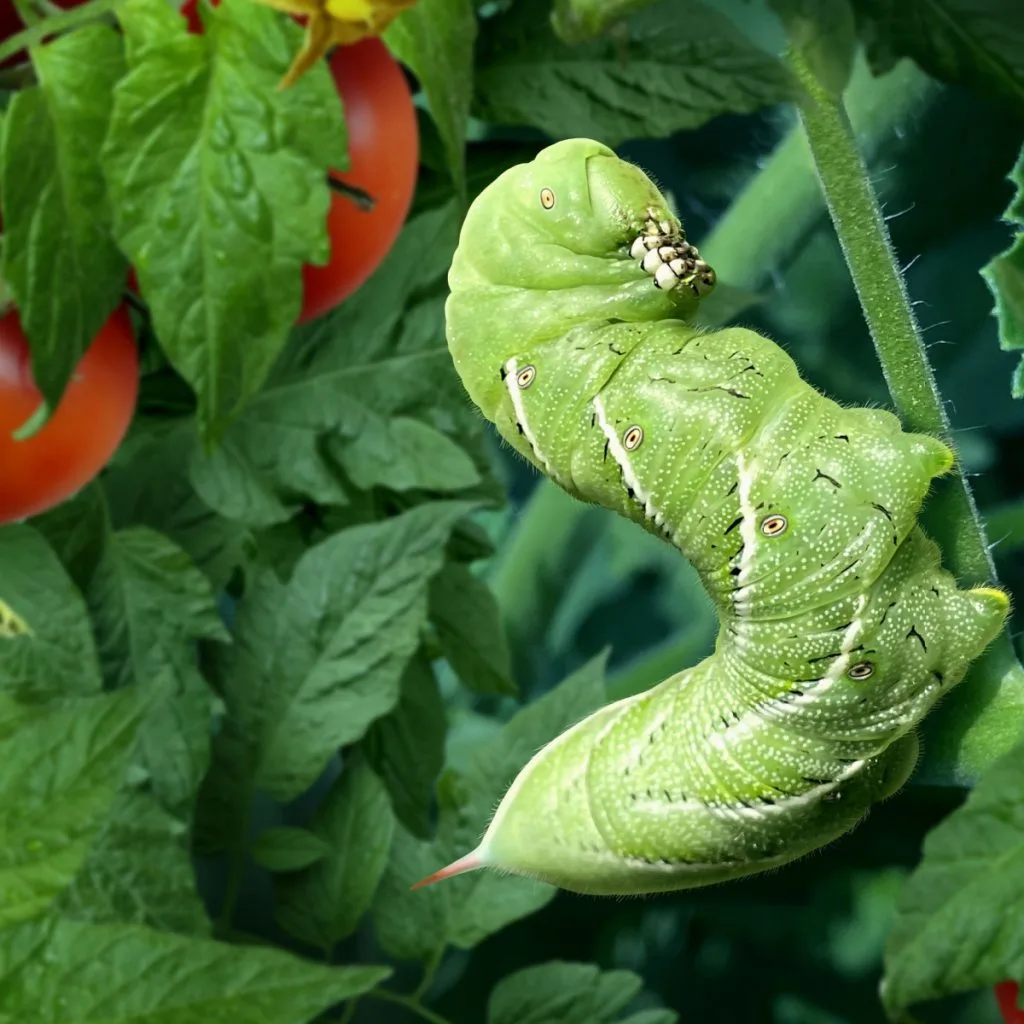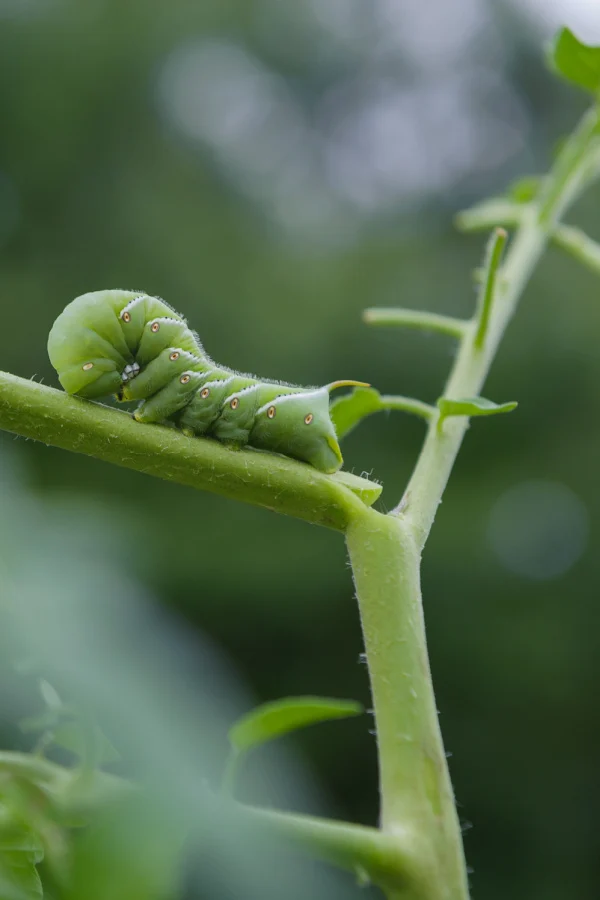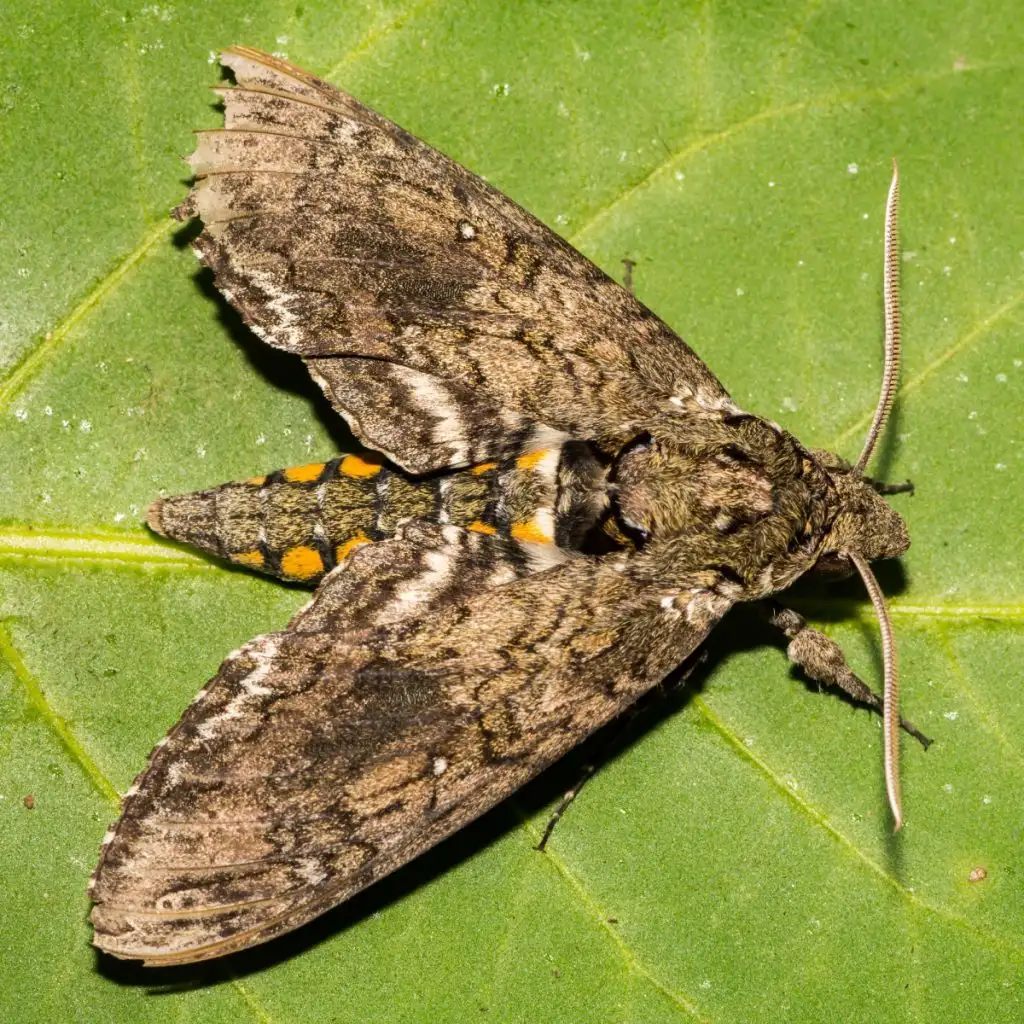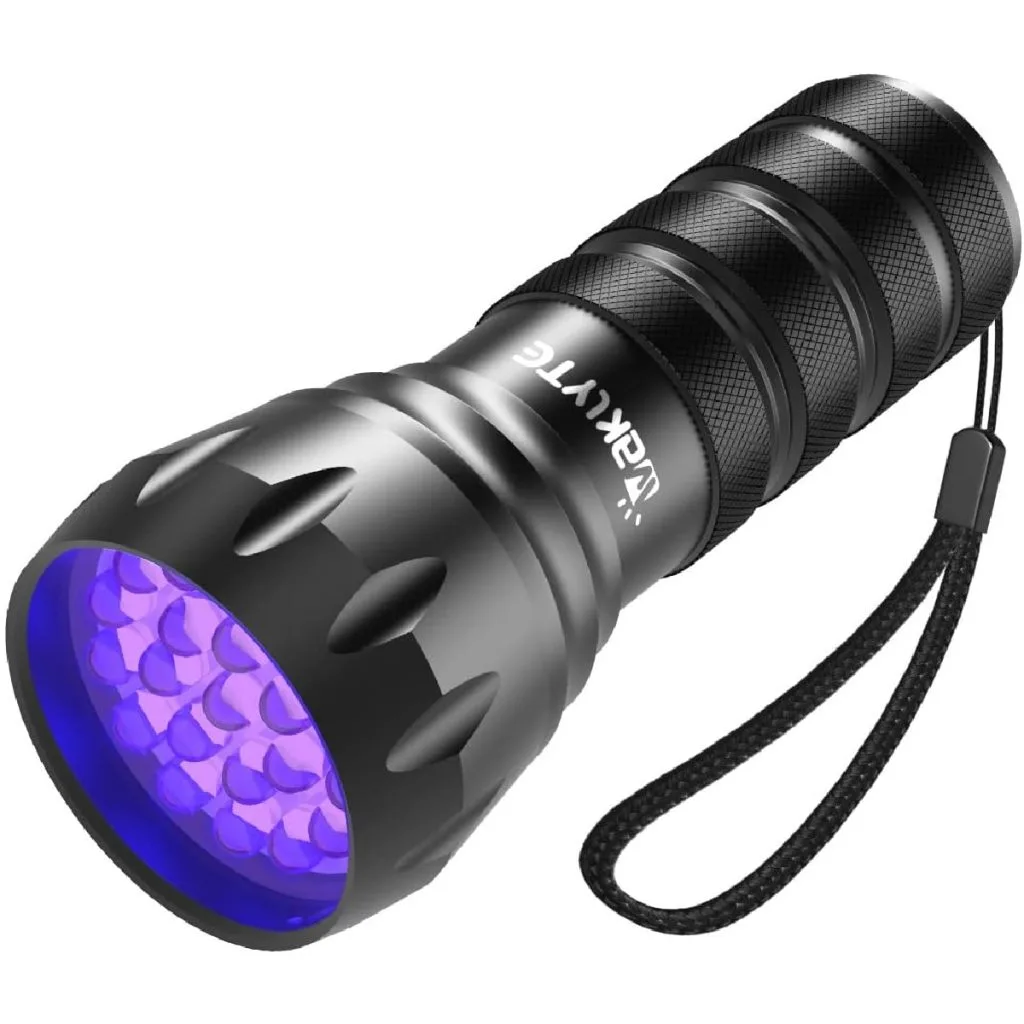Looking for the best way to find and stop tomato hornworms before they start to destroy your tomato plants and your harvest?
As summer sets in and garden plants begin to grow fast, it’s time to be on the lookout for one of the most damaging pests in the vegetable garden – tomato hornworms. These big green caterpillars can quickly destroy your tomato plants and other vegetables if you don’t catch them in time. Even worse, they’re hard to spot and can blend right in with the plants.
The key to stopping them is knowing what they are, where they come from, and how they behave. Once you understand that, it becomes much easier to protect your tomato plants and keep them safe through the summer!

How To Find & Stop Tomato Hornworms
What Are Tomato Hornworms?
Tomato hornworms are the caterpillar stage of a large moth. There are actually two types that look and act almost the same – tomato hornworms and tobacco hornworms. And both can cause major damage in the garden.
You can tell the two apart by looking at their stripes and the horn sticking up from the back of their bodies. Tomato hornworms have eight white V-shaped stripes along their sides and a dark-colored (usually black or brown) horn on their rear.
Tobacco hornworms, on the other hand, have seven straight white lines and a red horn. But even though they’re different, they both need to be removed from your garden as soon as you see them. If not, they can damage large portions of plants in a single day!
They eat the leaves, stems, and even the fruits of tomato plants. But tomatoes aren’t their only target. They also feed on peppers, eggplants, and potatoes.

The Life Cycle Of A Hornworm
Hornworms start their life in the soil. In the spring, the adult moths emerge from their cocoons underground. These moths are large and very skilled fliers. They look a lot like hummingbirds when flying and are usually most active during dusk and at night.
Once the moths emerge, they feed on the nectar of flowers. As they fly around the garden, they lay small, round eggs on the underside of leaves. Especially on young and tender tomato and pepper plants. After just a few days, the eggs hatch, and the tiny caterpillars begin to feed.
At first, the hornworms are small and may not cause much damage. But within just a few days, they grow quickly. A full-grown hornworm can reach up to four inches long and can eat entire leaves, stems, and even green tomatoes in just a day or two.
Even worse, a single moth can lay dozens of eggs, which means the problem can get out of control fast. This cycle can repeat more than once during the summer. That’s why it’s so important to check your plants regularly and act fast before the hornworms take over.
Why Tomato Hornworms Are Hard To Find
Although hornworms are large, they are still very hard to see. Their bright green color allows them to blend in perfectly with tomato leaves and stems. You can easily walk past a plant and never notice them unless you’re looking very closely.

In fact, many gardeners first notice hornworms not by seeing them, but by seeing the damage they leave behind. The worms chew through leaves and stems and leave behind little piles of green droppings on the leaves below.
If you see parts of your plant that have been stripped of leaves or branches with only short nubs left, you’re likely dealing with a hornworm problem. And it’s time to jump into action fast!
Daily Garden Checks Make A Big Difference
One of the best ways to stay ahead of hornworms is to do a daily check of your garden. It only takes a few minutes, but it can save your plants from major damage.
As you walk through your garden, keep an eye out for missing leaves, chewed branches, or stripped stems. Hornworms tend to hide during the heat of the day, so early morning or late evening is usually the best time to look.
One helpful trick is to look for green droppings on the leaves. These are small, pellet-like droppings that hornworms leave behind as they eat. If you see fresh droppings, look closely above them on the plant – that’s where you’ll usually find the culprit. If they are darker in color, that means they have dried and the worm is probably farther away.

The Black Light Trick To Find Hornworms
Because they can be so difficult to find, some gardeners like to use the black light flashlight trick to find them. At night, the bodies of hornworms glow under ultraviolet light. This makes it easy to spot them even if they’re well hidden during the day.
You can buy an inexpensive black light flashlight online or at your local hardware store. After dark, take it out to your garden and shine it on your tomato plants. Affiliate Link: Black Light UV Light, 21 LED 395nm UV Flashlight.
Hornworms will glow with a bright green light, and you can easily pick them off by hand. This method is especially helpful if you’re having trouble finding them during the day.
Handpicking Hornworms Off Your Plants
Once you’ve spotted a hornworm, the easiest way to get rid of it is to pick it off by hand. Hornworms do not bite or sting, although they may wiggle a lot when you touch them.
After removing them, drop the worms into a bucket of soapy water to kill them. If you have chickens, they will gladly eat the hornworms for you. Chickens love them, and it’s a good source of protein for your flock.

Encouraging Natural Predators To Help
One of the best ways to manage hornworms naturally is to let nature help. There are several insects that feed on hornworms, but one of the most helpful is the braconid wasp. These wasps are tiny and harmless to humans, but they do something amazing when it comes to hornworms.
The female wasp lays her eggs on the back of a hornworm. When the eggs hatch, the young wasps feed on the hornworm and eventually kill it. If you ever see a hornworm with what looks like small white grains of rice sticking out of its back, do not remove it.
Those are wasp cocoons, and the worm is already dying. Leaving it in place helps grow the wasp population in your garden and reduces future hornworm problems.
You can also attract more beneficial insects like ladybugs, lacewings, and parasitic wasps by planting flowers such as marigolds, dill, fennel, yarrow, and alyssum.
These plants provide nectar and pollen, which attract the good bugs that help keep hornworms and other pests in check. See our article: Why To Plant Marigolds With Tomato Plants – The Big Secret To Growing Great Tomatoes!
Hornworms may be one of the most destructive pests in the vegetable garden, but with a little effort and close attention, you can find and stop them before they damage your tomato plants! For more tips on keeping your tomato plants healthy & thriving, be sure to check out: The 3 Biggest Mistakes Gardeners Make With Tomato Plants In Mid Summer.
Simple Garden Life
Follow Our Facebook Page For Even More Great Tips! Simple Garden Life Facebook Page
Simple Garden Life is a website dedicated to keeping gardening fun, simple and enjoyable! We publish two new articles each week along with a new garden podcast episode every two weeks. This article may contain affiliate links.
